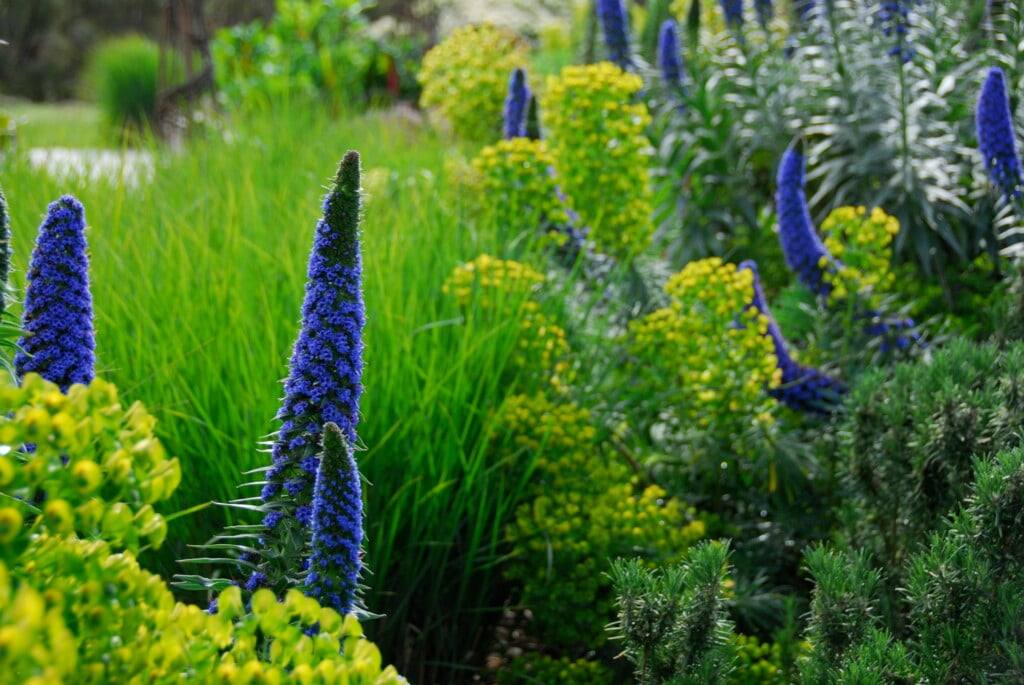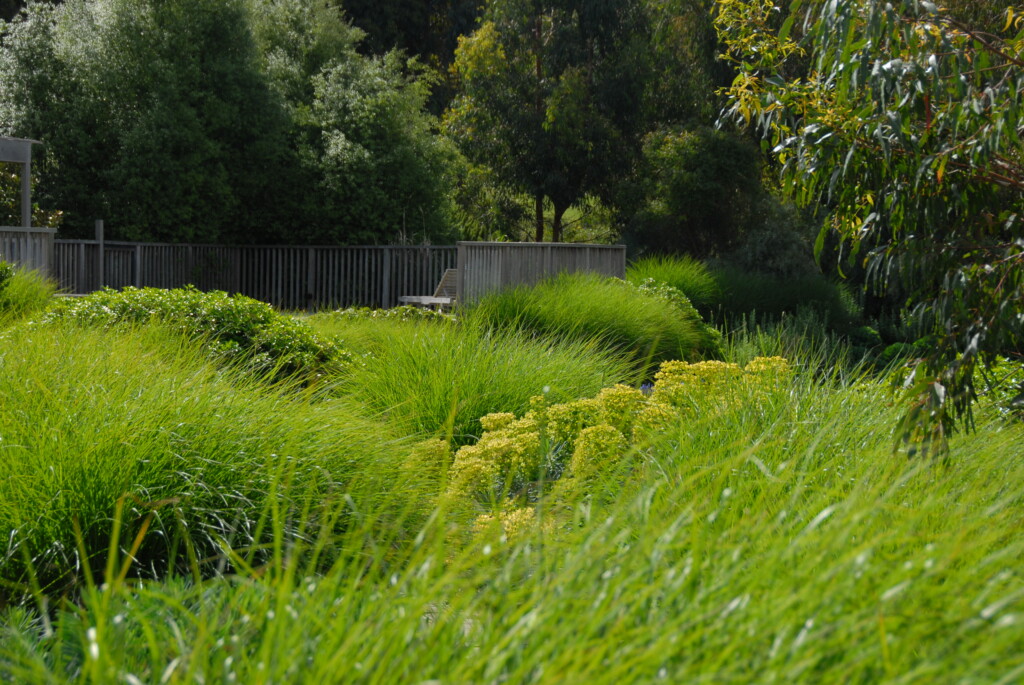If Euphorbia characias subsp. wulfenii suddenly disappeared from our plant palettes, imagine the hole it would leave!
What else would we ever find to flower at this time of year, so joyously, and so warmly, so perfectly providing the background and colour contrast to the other jewel-like joys of this season, with so little fuss, with absolutely no seasonal ‘downtime’, and with such generosity as to ensure plenty of offspring for other locations?
Or to think of it another way, if you were asked to design a perfect addition to the garden, that would peak in late winter and throughout spring, and you came up with the specs for Euphorbia wulfenii (which is what it’s mostly, if inaccurately known as), I’d say that you were asking too much – way too much – from one plant.

But here it is. True, it has its flaws. It can be too generous in self-sowing, and its sap is an irritant to most gardener’s skin, and a blinding, hospital-visit-necessitating irritant to the eyes. Long sleeves when working with it, and safety glasses when pruning it, will reduce those risks to near zero.
Everything else about it is overwhelmingly positive.
Dead-heading/pruning isn’t fun, but for once (in gardening) it follows outrageously simple guidelines. Just remove – right to the ground – all stems that have flowered. Nothing else to it.

It’s also one of the easiest of all plants of its size to get rid of. Slide a spade into the ground beneath it in a couple of spots near its base, and you’ll lift it out, with ease, and with no soil attached.
For that little effort you get a stunning dome of neat, blue-grey foliage throughout summer, autumn and winter, towards the end of which most of the stems will start to stretch and arch like a cobra before a snake charmer. Then, in straightening, the stem is transformed into a torch of acid lime-green flame, raising the temperature of all the surrounding planting for months on end. Most gardeners dead-head them as soon as they start to brown, but in dry climates in which the dead bracts can take on a sear, straw quality, there may be times and places when you want to hang onto them. Either way, by then, the shrub will have entirely renewed itself with new shoots from the base, ready for next winter.

It is, quite frankly, the near perfect plant. Don’t make the mistake of taking it for granted.
Hi Michael, I have a couple of Euphorbia and this is my favourite by far. This year I have pruned it quite late and it’s not looking the best. I hope it will pick up soon, but guessing if not this season it will be perfectly fine the next.
Oh and I’m loving the rusty high heels in the first picture, are these yours 😂
Yvonne
North Geelong
Hi Yvonne. When you prune it shouldn’t really make any difference, as all of the stems that previously flowered should be cut right back to the base, while all of the stems that have yet to flower should remain untouched. So I’m not sure what’s going on with yours. But as you say, time will tell
I have a euphorbia Dixter that I bought last year. What are the right conditions for it? can’t find much information any where. How much sun does it need? Full sun is not really available in my garden, particularly in winter, as that garden is behind my neighbours house to the north.
Hi Jennifer, Euphorbia ‘Dixter’ is a different species altogether, and is entirely deciduous over winter. That’s good news, given that you don’t have sun in winter. But otherwise – from spring through to autumn – it should be in as much light/sun as you can possibly give it. It gets cut right to the ground in late autumn, and then remains dormant until new shoots arise from the ground in spring.
What a workhorse plant these are. Colour accents and resilience make them a wonderful plant. I love how they say ‘Hello, I’m here’! in the depths of winter. The vibrant green brightens my mood 😊
HI Michael,
My nan has a number of Euphorbia Wulfenii in her garden that look amazing. Each year I try to transplant the seedlings that self seed into my garden but they never seem to take. Is there a secret to making sure they transplant successfully. Do Euphorbias like being transplanted? They are always quite young when I try. My garden is full sun/dry in summer so I thought they would be perfect.
Thank you,
Kim
Melbourne
I transplant them all the time, without any issues, Kim. As you’ve already assumed, they like being moved young, and while I try to keep a ball of soil around their roots, it invariably falls off, leaving one or two roots. But I water them into the new spot, and they nearly always take. Try again! But keep them moist for a while after transplanting. nothing likes being dry immediately after that kind of shock
I love these too. And would add a very tolerant attitude to situation and soil to the many virtues you describe. Part shade and heavy clay is accepted as happily as gravelly full sun.
They can be a bit variable from seed: height and flower size. But like you say, so generous in seeding that you can easily be ruthless with them. Probably my favourite plant.